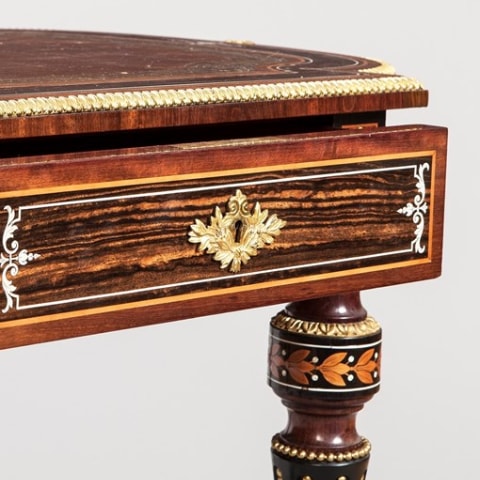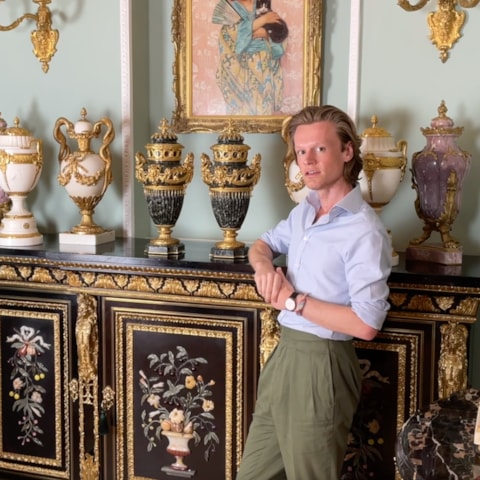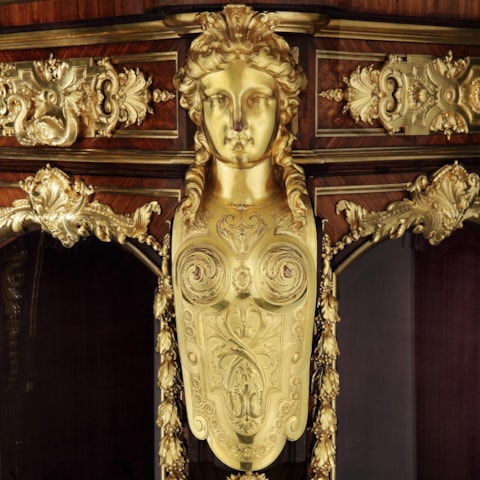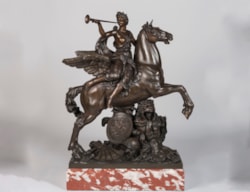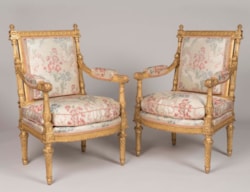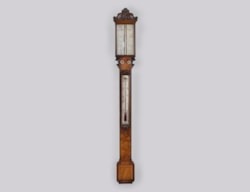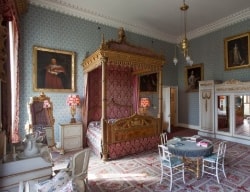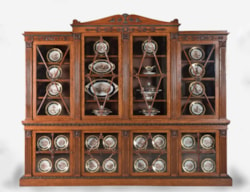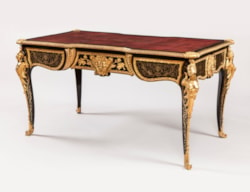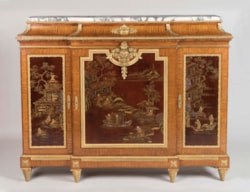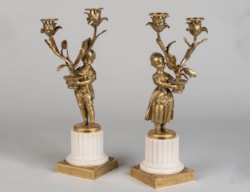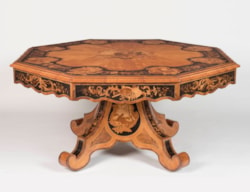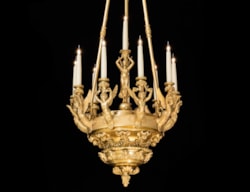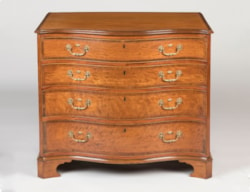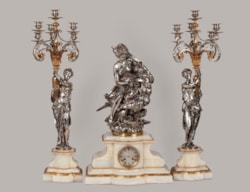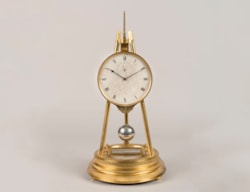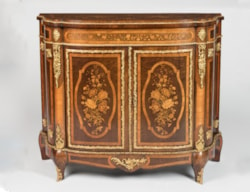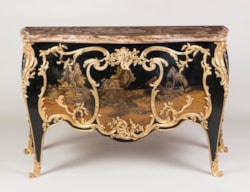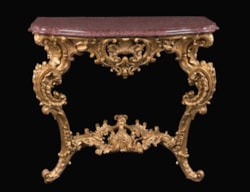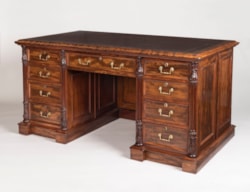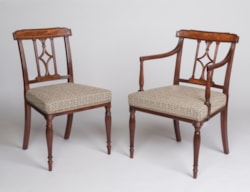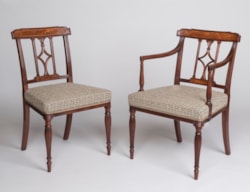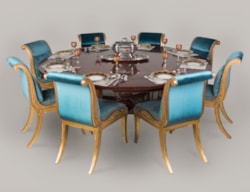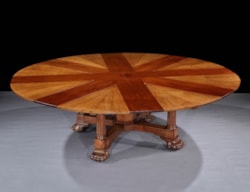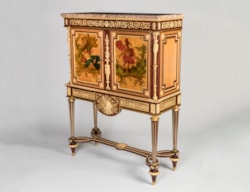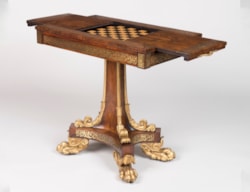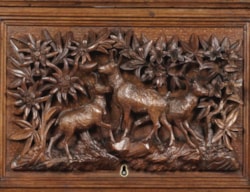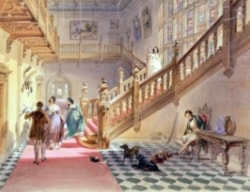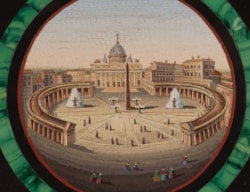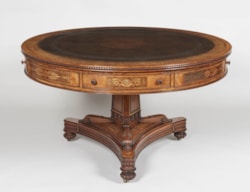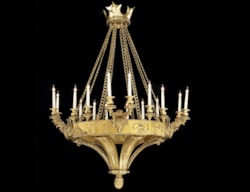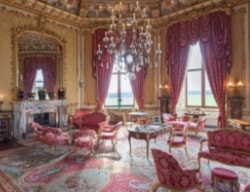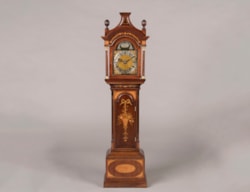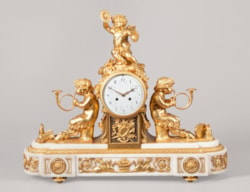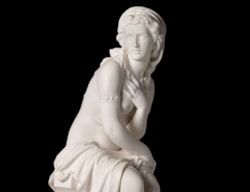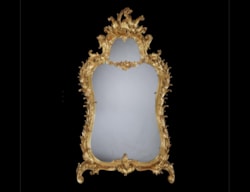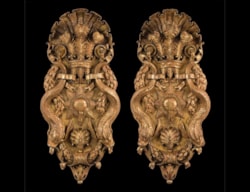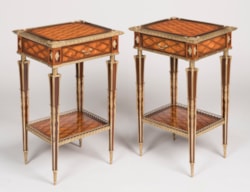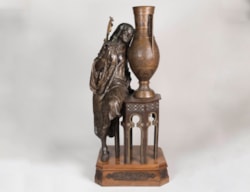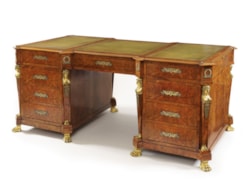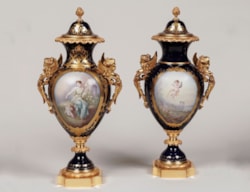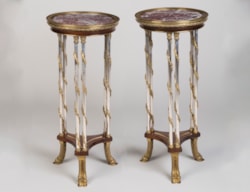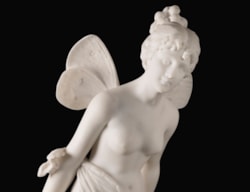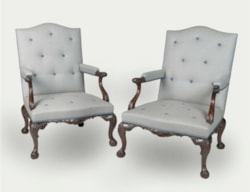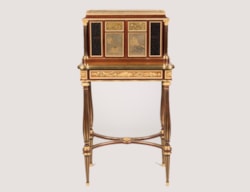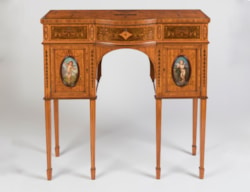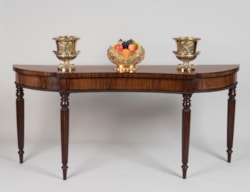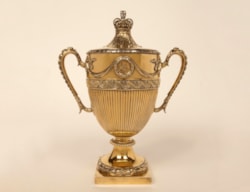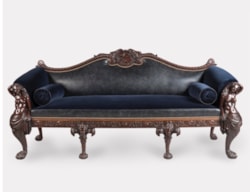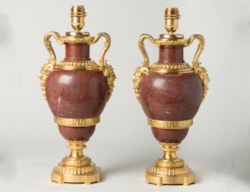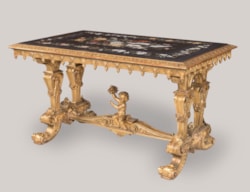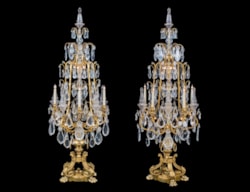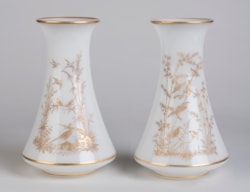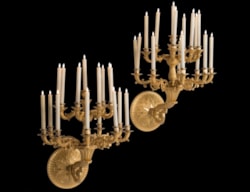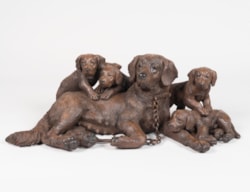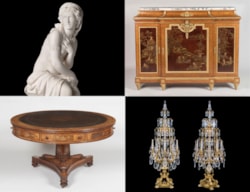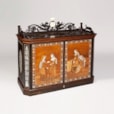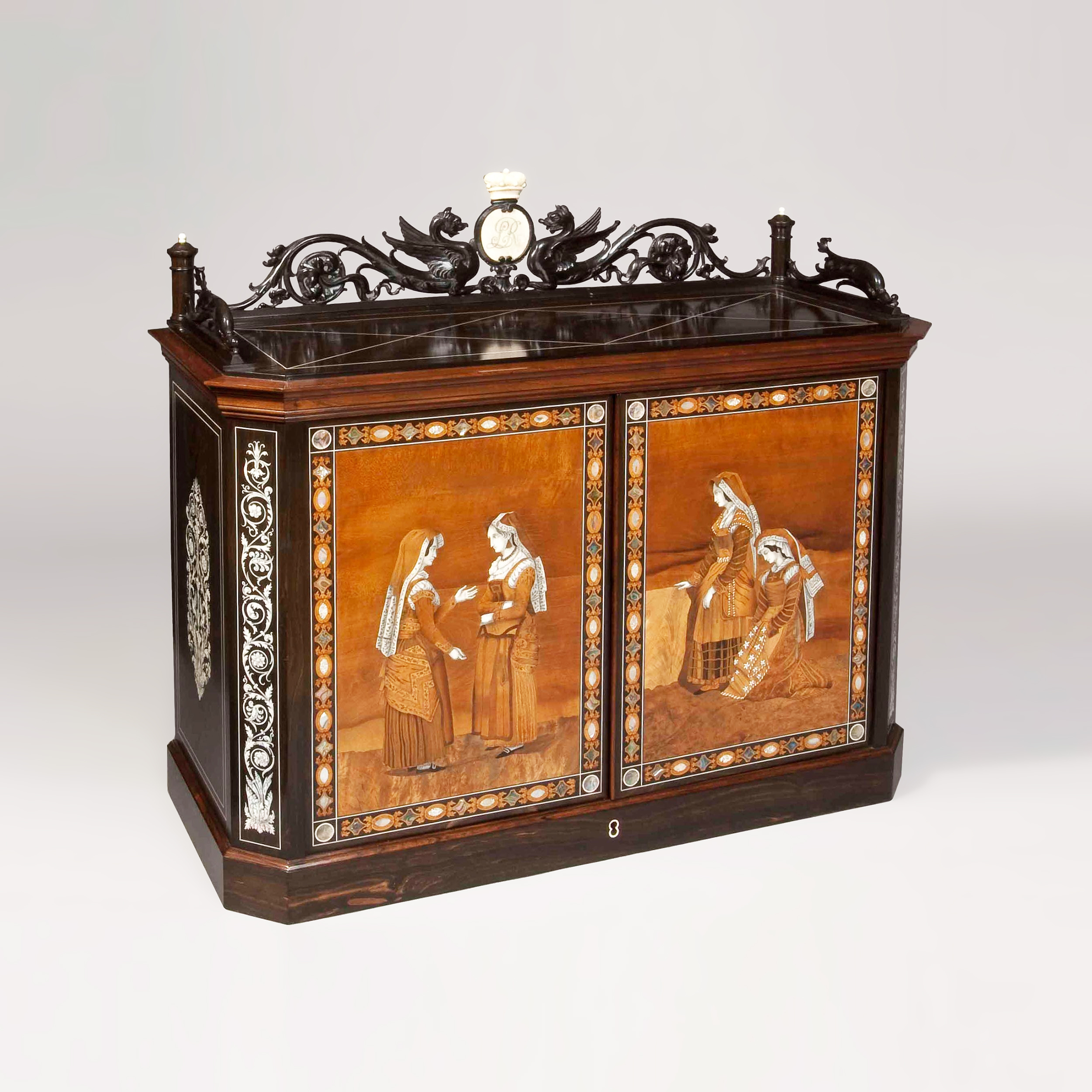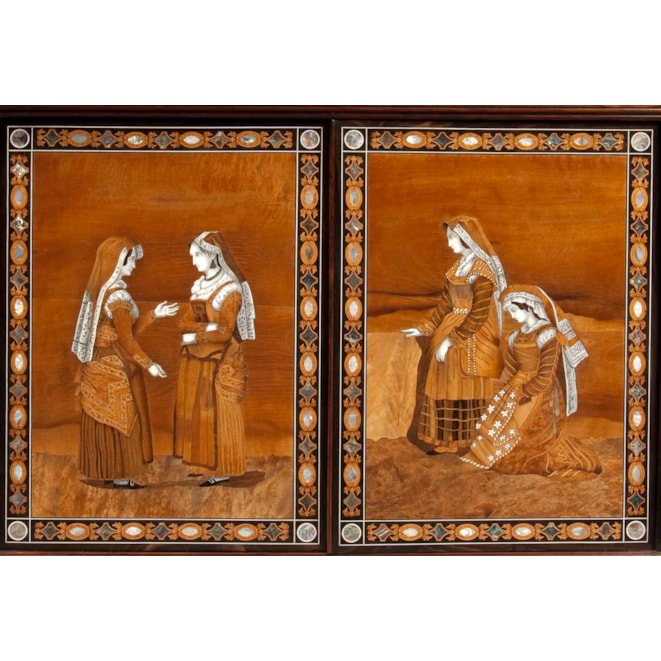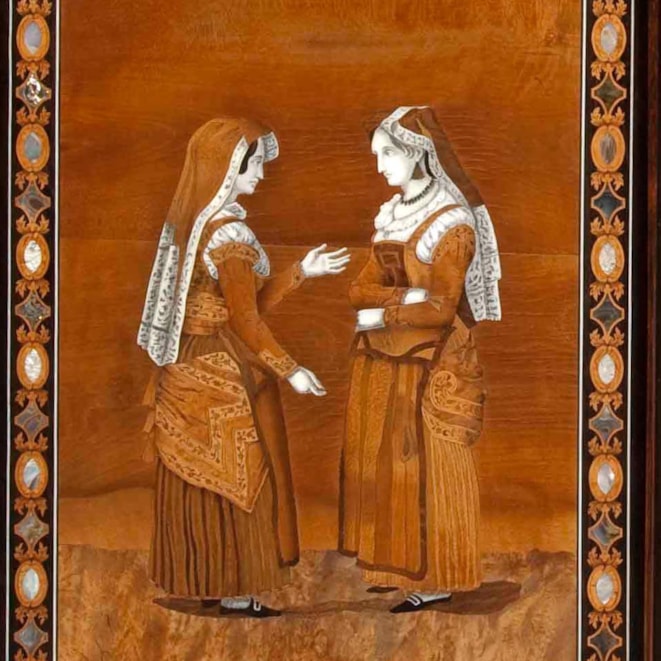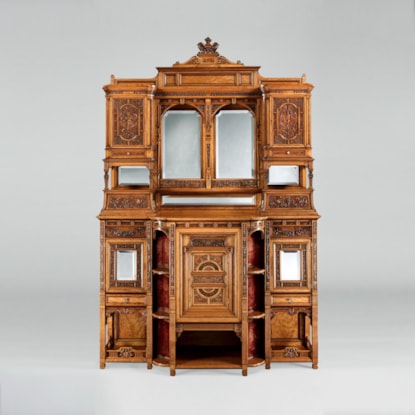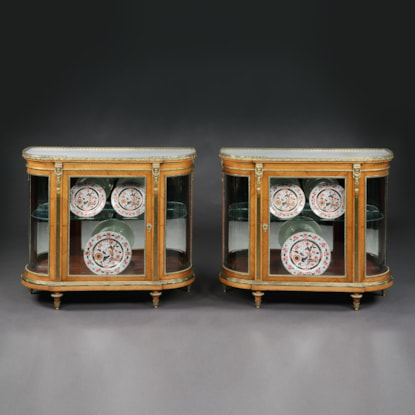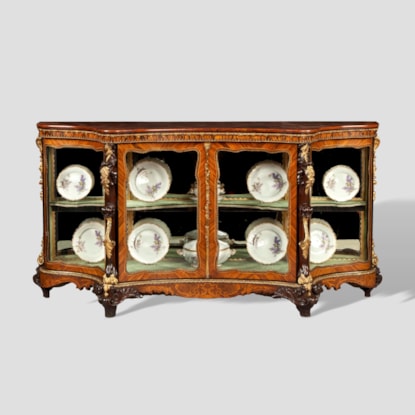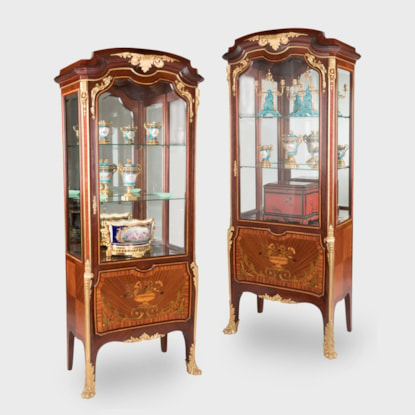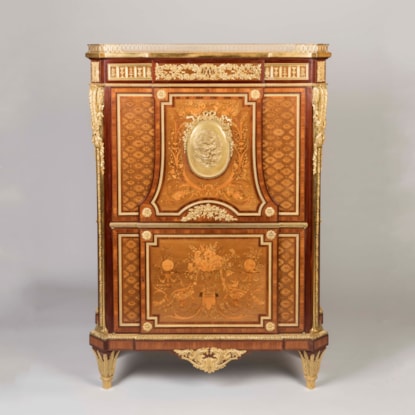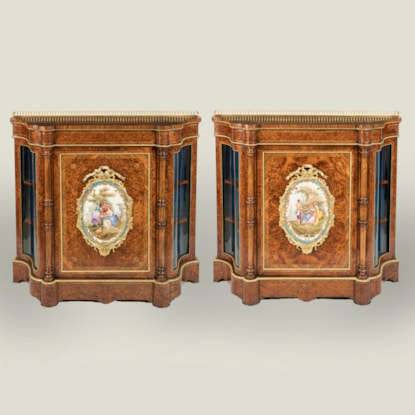A Fine Table Cabinet firmly attributed to Giovanni Battista Gatti
A Fine Table Cabinet firmly attributed to Giovanni Battista Gatti
Dimensions: H: 26 in / 66 cm | W: 30.5 in / 78 cm | D: 11 in / 28 cm
PRICE: £12,500
Constructed in Ebony and Walnut, with Mother of Pearl and Ivory inlays; of rectangular form, with canted angles, rising from a plinth base, incorporating an ivory escutcheon, with two lockable doors decorated with depictions of Italian duennas in regional costume, within running borders of stylised cartouches, and enclosing a shelved interior; the sides and angles having a complex ivory inlay decoration in the neo- Renaissance manner; the gallery, of foliate arabesques, centred about a Ducal crown, enclosing the initials ‘LR’. Probably Faenza, Circa 1870
This item contains less than 10% ivory and has been registered with Defra.
Giovanni Battista Gatti (1816-1889) was one of the most distinguished European cabinet makers of the 19th century. Having studied in Rome and Florence, he worked as a journeyman cabinet-maker before establishing his own workshop at Faenza in the 1870's specialising the Milanese intarsia manner with ivory on a background of ebony. Ill health saw him ceasing his craft in 1881. Working in the Renaissance Revival manner pioneered in the first half of the century by craftsman such as Pietro Bertinetti, Gatti and his Italian contemporaries helped to establish this style as a dominant aesthetic mode in the 1860's and 1870's. He enjoyed the support of imperial, aristocratic and ecclesiastical patrons in Europe including the Austrian Emperor, the Duke of Hamilton and Cardinal Amant, and was also popular amongst American industrial collectors such as Wright E Post and William Gilstrap. Examples of his work are found not only in the Victorian and Albert Museum, but also in the Nelson-Atkins Museum, Kansas City, and the Minneapolis 0Institute of Arts. Gatti's spectacular inlaid exhibition pieces gained him numerous awards at Europe's international industrial and cultural expositions: at the 'Paris Expositions Universelles' (First Class Medal 1855; diplome d'honneur, 1867; Gold Medal 1878) and at 'Vienna's Internationalische Ausstellung' (1873) Gatti, whose name translates from the Italian as 'cats', occasionally incorporated a cat into his complex work. A cabinet made for the 1855 Paris Exposition shows similar borders and gallery.
You may also like

 Vip access
Vip access

 Favourites
Favourites






